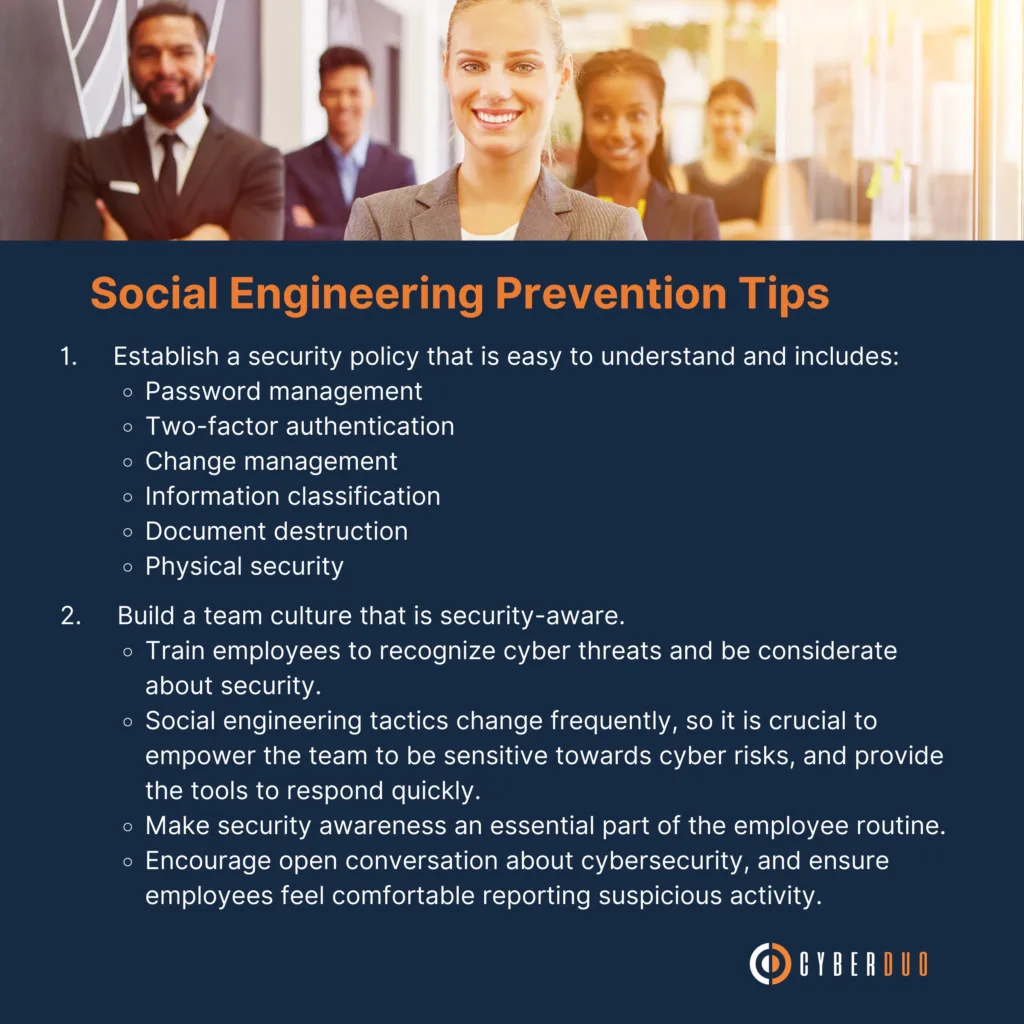
Implement security policies and educate.
To reduce the risk of social engineering attacks, begin with training new employees and holding regular threat assessments. Follow through with policy updates and keep team members well informed.
1. Establish a security policy that is easy to understand and includes:
- Password management – Encourage high standards for secure passwords and emphasize the importance of careful remote and office access authorization and accountability.
- Two-factor authentication – Set up two-factor authentication for your team to have a more secure sign-in experience instead of fixed passwords to authenticate high-risk networks such as VPNs.
- Change management – Train your team to be familiar and comfortable with a well-documented change management process to reduce the vulnerability to a cyber-attack that exploits a false sense of urgency.
- Information classification – Assign confidentiality levels for sensitive information and set up role-based access.
- Document destruction – ensure you and your team shred papers containing confidential information rather than tossing it in the trash or recycling.
- Physical security – Include controls like visitor logs, background checks, security devices, and escort requirements in your security policy.
2. Build a team culture that is security-aware.
- Encourage your team to stay aware of threats and risky behavior by educating employees on the reality of the damage done to other companies by cyberattacks.
- Train employees to recognize cyber threats and be considerate about security.
- Social engineering tactics change frequently, so it is crucial to empower the team to be sensitive towards cyber risks, and provide the tools to respond quickly.
- Make security awareness an essential part of the employee routine.
- An effective way to counter cyberattacks, encourage open conversation about cybersecurity, and ensure employees feel comfortable reporting suspicious activity.